Who is here? 1 guest(s)
|
Scatopsidae ID
|
|
| Jozef Obona |
Posted on 22-04-2011 17:11
|
|
Member Location: Posts: 336 Joined: 07.12.10 |
cca 2 - 3 mm from tree-holes /Quercus sp./ Slovakia  thanks a lot Jozef Edited by Jozef Obona on 27-04-2011 13:39 |
|
|
|
| atylotus |
Posted on 25-04-2011 07:51
|
|
Member Location: Posts: 1112 Joined: 29.05.09 |
If I would make a guess, than a Fannia species is an option. But these feathery prothoracic spiracles (?) are a bit odd (to me). |
|
|
|
| Cranefly |
Posted on 25-04-2011 17:03
|
|
Member Location: Posts: 646 Joined: 17.09.08 |
Resembles Phoridae pupa. Some Phoridae genera have such horns, Dohrniphora for example, but the end of this larva is without projections. With much doubt, Phoridae?? |
|
|
|
| Tony Irwin |
Posted on 25-04-2011 19:37
|
|
Member Location: Posts: 7168 Joined: 19.11.04 |
Scatopsidae - Rhexosa, perhaps?
Tony ---------- Tony Irwin |
|
|
|
| Cranefly |
Posted on 26-04-2011 05:08
|
|
Member Location: Posts: 646 Joined: 17.09.08 |
I wonder whether it has head - if no, then it is from higher Diptera. Possibly some specialists in Fanniidae, Phoridae and Scatopsidae may recognize this larva?  |
|
|
|
| atylotus |
Posted on 26-04-2011 09:22
|
|
Member Location: Posts: 1112 Joined: 29.05.09 |
perhaps one could check with Ferrar (1987) on the immature cyclorrhapha. I do not have this book complete. |
|
|
|
| Paul Beuk |
Posted on 26-04-2011 09:44
|
|
Super Administrator Location: Posts: 19208 Joined: 11.05.04 |
I would say Scatopsidae, too. Not certain about Rhexoza, though.
Paul - - - - Paul Beuk on https://diptera.info |
|
|
|
| Jozef Obona |
Posted on 26-04-2011 16:17
|
|
Member Location: Posts: 336 Joined: 07.12.10 |
other photos   Thank you all so much! Jozef Edited by Jozef Obona on 26-04-2011 16:22 |
|
|
|
| Paul Beuk |
Posted on 26-04-2011 20:03
|
|
Super Administrator Location: Posts: 19208 Joined: 11.05.04 |
Those certainly look like the Rhexoza's in the books. 
Paul - - - - Paul Beuk on https://diptera.info |
|
|
|
| Tony Irwin |
Posted on 26-04-2011 20:41
|
|
Member Location: Posts: 7168 Joined: 19.11.04 |
Except the Rhexoza pictures I have seen have branched processes - but maybe one or more of the European species has unbranched processes? Josef - Have you got any adult scatopsids from the tree hole? Tony ---------- Tony Irwin |
|
|
|
| Jozef Obona |
Posted on 27-04-2011 13:37
|
|
Member Location: Posts: 336 Joined: 07.12.10 |
Tony Irwin wrote: Except the Rhexoza pictures I have seen have branched processes - but maybe one or more of the European species has unbranched processes? Josef - Have you got any adult scatopsids from the tree hole? Unfortunately I have any scatopsids adults from tree hole(s) I have only larvae http://www.dipter...pid=162668 But I'll try it found. Thank you very much for ID Jozef |
|
|
|
| Tony Irwin |
Posted on 27-04-2011 14:38
|
|
Member Location: Posts: 7168 Joined: 19.11.04 |
Well, I'd say that this pupa is from your larvae - it would be great if you can collect some live larvae (or live pupae which would be easier to rear).  What other insects were in the tree hole? Was there standing water in the hole, or just damp leaves? - I'd like to have a look at some similar habitats here. Tony ---------- Tony Irwin |
|
|
|
| Jozef Obona |
Posted on 27-04-2011 16:04
|
|
Member Location: Posts: 336 Joined: 07.12.10 |
Tony Irwin wrote: Well, I'd say that this pupa is from your larvae - it would be great if you can collect some live larvae (or live pupae which would be easier to rear).  What other insects were in the tree hole? Was there standing water in the hole, or just damp leaves? - I'd like to have a look at some similar habitats here. I study mostly (only) water field tree holes. More in Private Message  |
|
|
|
| Jump to Forum: |


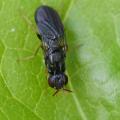



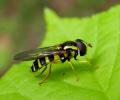
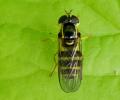

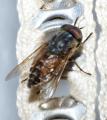
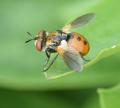



 but don't see the image in the post.
but don't see the image in the post.